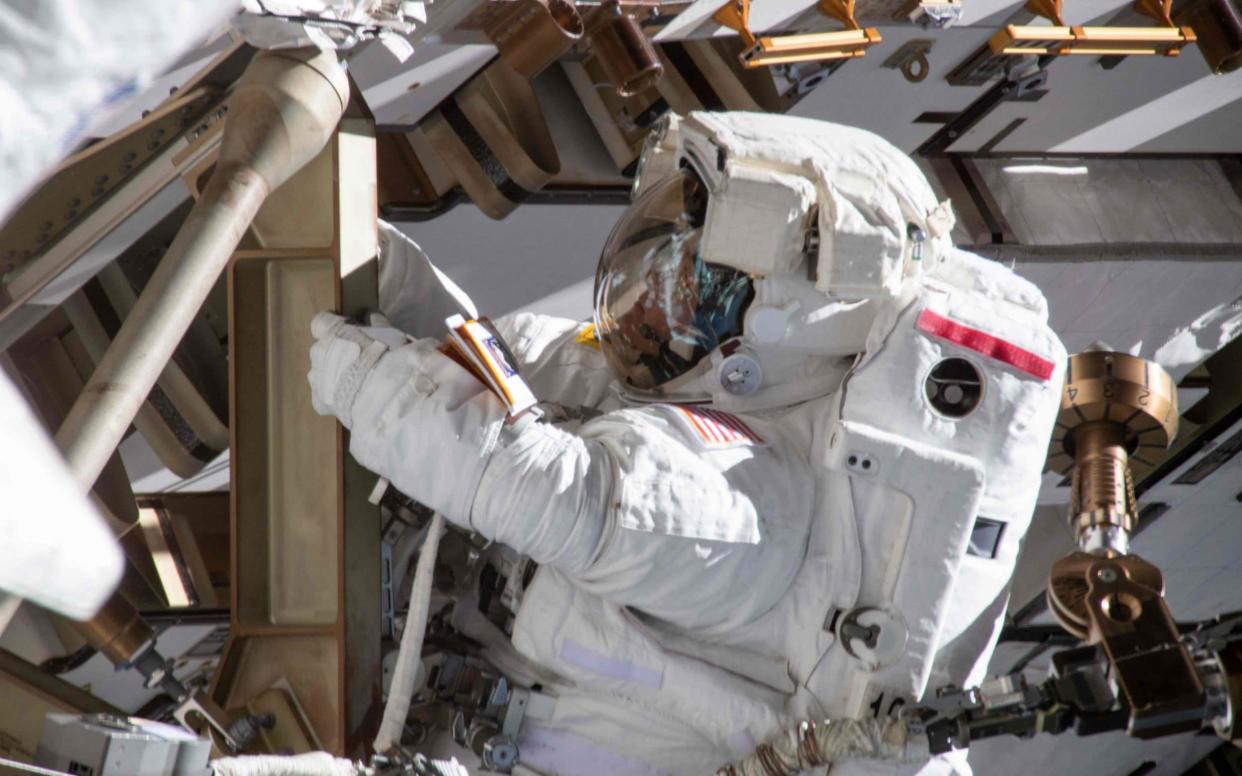Nasa cancels first all-female spacewalk because they don't have the right spacesuit sizes

Nasa has cancelled its first ever all-female space walk outside the International Space Station after it emerged it did not have enough suits to fit women.
In a blow to what would have been one great leap for womankind, the plan for Christina Koch and Anne McClain to change a battery on the exterior of the ISS had to be called off.
Both astronauts required a medium sized spacesuit to carry out the spacewalk, but the station only has one because most of the male astronauts rely on large or extra-large sizes. As a result, Nasa said Ms McClain would have to give up her place to a male spacefarer.
It would have been the first time two women carried out the space walk, rather than a team comprising of a man and a woman.
The news has reignited the debate about whether the traditionally male-dominated space industry is unconsciously biased against female workers.
Earth will learn a lot during his busy week on @Space_Station - today he kept me company while we checked our suit sizing to account for space growth (I am 2 inches taller than when I launched!), then we did some translation adaptation. pic.twitter.com/A89tJauyQu
— Anne McClain (@AstroAnnimal) March 4, 2019
In a press release, Nasa said it had postponed Ms McClain’s space walk “due in part to spacesuit availability on the station.”
"Koch had been scheduled to conduct this spacewalk with astronaut McClain, in what would have been the first all-female spacewalk," it said. “McClain learned during her first spacewalk that a medium-size hard upper torso – essentially the shirt of the spacesuit – fits her best.
"Because only one medium-size torso can be made ready by Friday, March 29, Koch will wear it."
Ms McClain is expected to do her space walk on a different date, April 8, which means the plan for an all-female space walk has fallen through.
Senior figures in the space industry said they were disappointed with the setback, but pointed out that Nasa had taken a number of steps to bring in more female astronauts.
“It is a shame that we won't see the first all-female spacewalk this week, but the bigger disappointment is that in 20 years of humans living on the ISS, it hadn't already happened,” said Kate Arkless Gray, programme lead at the Frontier Development Lab, Europe.
She pointed out that Ms McClain and Ms Koch are from Nasa’s 2013 intake, which had a 50/50 gender split. “Nasa has been doing some good work to encourage women in STEM (Science, technology, engineering, and mathematics), including proactively changing the language used to talk about spaceflight,” she said.
Nasa has also encouraged workers to avoid gendered phrases such as a “manned spacecraft” to promote inclusivity, in favour of a “crewed spacecraft ” or a “human spaceflight.”
�� �������������� ������������ ���� ������ ����’�� ���������� ��������… pic.twitter.com/2fDXJX94wa
— Anne McClain (@AstroAnnimal) March 25, 2019
“It may seem like a small thing, but it's something that we can all do to ensure that women feel like space is for them too,” said Ms Arkless Gray.
Meanwhile, Vice President Mike Pence announced Tuesday that the United States aims to send astronauts back to the moon in five years, with a woman first in line to set foot on it again.
"Let me be clear, the first woman and the next man on the moon will both be American astronauts launched by American rockets from American soil," he said.
The first woman to conquer space was Soviet cosmonaut Valentina Tereshkova, who launched in 1963, only two years after her male counterpart Yuri Gagarin.
Ms Tereshkova holds the record for the youngest female astronaut at 16 years old and the only woman to take part in a solo mission. In 1978, following a series of anti-discrimination laws, Nasa opened its space program to women. Sally Ride became the world’s third female cosmonaut when she launched in 1983 aboard the seventh Space Shuttle mission.
Helen Sharman was the first British astronaut in the cosmos. She launched in 1991 and worked in space station Mir, thanks to a joint Soviet Union-British programme.
In the nearly 60 years of crewed space exploration, less than 11 percent of spacefarers were women, and there has never been an all-female mission.

